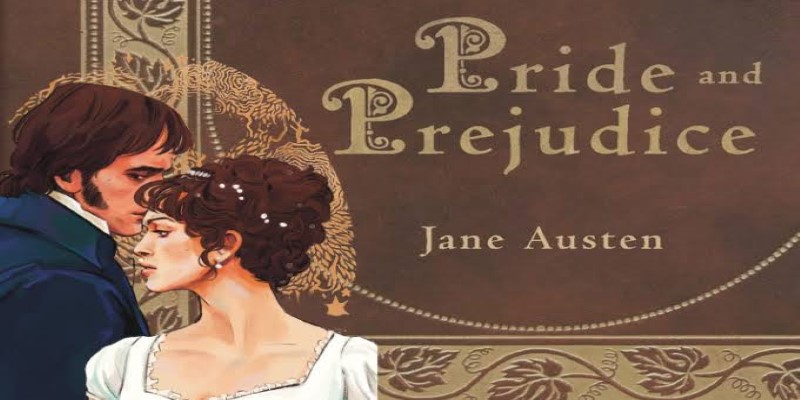"Pride and Prejudice" by Jane Austen is a timeless classic that has captivated readers since its publication. Let's explore the journey of this literary gem, delving into its publication history, plot summary, key themes and characters, and the various adaptations that have brought it to life over the years.
"Pride and Prejudice," released in 1813, didn't succeed immediately. Jane Austen initially chose to keep her identity under wraps, and the book hit the shelves without her name attached. Instead, she was credited as the author of "Sense and Sensibility," her previous work. Readers needed time to connect the dots and discover Austen as the brilliant mind behind this new novel.
The journey to recognition was slow, but the novel's wit, keen social commentary, and the intricate dynamics between its characters played a pivotal role in winning over readers. As people delved into the pages, they discovered a narrative that went beyond the societal norms of its time. The gradual revelation of Austen as the author added an intriguing layer to the book's history, contributing to its eventual rise as a timeless classic.
The story unfolds in the early 19th century in the English countryside, primarily focusing on the Bennet family. The protagonist, Elizabeth Bennet, is one of five sisters facing the societal pressure to marry well due to their family's modest financial standing.
Enter Mr. Darcy, a wealthy and seemingly proud aristocrat. Initially, he and Elizabeth clash due to misunderstandings and societal prejudices. As the plot thickens, misunderstandings are clarified, and characters evolve, paving the way for a slow-burning romance.
The novel cleverly intertwines love, societal expectations, and personal growth. It's not just a love story but a keen observation of the societal norms and class distinctions prevalent in the early 19th century.

"Pride and Prejudice" weaves a tapestry of themes that delve into societal norms and individual growth. Let's explore the key themes that resonate throughout the novel and the memorable characters who bring them to life.
Love and Marriage: At its core, "Pride and Prejudice" explores the nuances of love and marriage. It critiques the societal norms that push characters into relationships based on wealth and social standing rather than genuine affection.
Social Class: The novel sharply satirizes the rigid class structure of the time. Characters like Mr. Darcy initially embody the pride associated with high social standing, while Elizabeth represents the prejudice against it.
Individual Growth: Characters, especially Elizabeth and Mr. Darcy, undergo significant personal growth. They challenge their prejudices and learn to see beyond societal expectations.
Elizabeth Bennet: The second eldest daughter of the Bennet family, Elizabeth is known for her sharp wit, intelligence, and independent spirit. She is the novel's protagonist and serves as a keen observer of societal norms.
Mr. Darcy (Fitzwilliam Darcy): A wealthy and initially aloof aristocrat. Mr. Darcy's pride and reserved demeanor create tension, but his true character is revealed through personal growth and self-awareness as the story unfolds.
Jane Bennet: The eldest daughter of the Bennet family, Jane is admired for her beauty, kindness, and gentleness. She contrasts with her more outspoken and sharp-witted sister, Elizabeth.
Mr. Bennet (Mr. Thomas Bennet): The patriarch of the Bennet family, Mr. Bennet is characterized by his dry wit and somewhat cynical view of societal expectations. He is the father of five daughters.
Mrs. Bennet (Mrs. Fanny Bennet): The mother of the Bennet sisters, Mrs. Bennet is preoccupied with marrying off her daughters, especially to wealthy suitors. She is known for her nerves and sometimes exaggerated reactions.
Mr. Bingley (Charles Bingley): A wealthy and amiable bachelor who becomes enamored with Jane Bennet. Mr. Bingley's easygoing nature contrasts with Mr. Darcy's initial pride.
Caroline Bingley is Mr. Bingley's snobbish and manipulative sister. She aspires to marry Mr. Darcy and disapproves of the Bennet sisters.
Mr. Collins (William Collins): A clergyman and distant cousin to the Bennet family. Mr. Collins is comically obsequious, and his proposal to Elizabeth is a memorable moment in the novel.
Charlotte Lucas: Elizabeth's close friend and confidante. Charlotte makes a practical and pragmatic decision to marry Mr. Collins for financial security.
Lydia Bennet: The youngest Bennet sister, known for her frivolity and flirtatious nature. Lydia's elopement with Mr. Wickham adds drama to the plot.
Mr. Wickham (George Wickham): A charming officer with a questionable past. Mr. Wickham's interactions with Elizabeth and Mr. Darcy contribute to the novel's conflict.
"Pride and Prejudice" has seen numerous adaptations in various forms of media, testifying to its enduring appeal. Here are a few noteworthy adaptations:
1995 TV Mini-Series: Colin Firth plays Mr. Darcy, and Jennifer Ehle portrays Elizabeth in this adaptation, widely praised for its faithfulness to the novel and the compelling chemistry between the main characters.
2005 Film Adaptation: Directed by Joe Wright and starring Keira Knightley as Elizabeth and Matthew Macfadyen as Mr. Darcy, this adaptation brings a fresh cinematic perspective to the classic tale. While some purists may critique certain liberties taken, it introduced a new generation to Austen's world.
Modern Retellings: From Bridget Jones's Diary to various web series and modern reimaginings, the story of "Pride and Prejudice" continues to inspire contemporary adaptations that transport the timeless narrative into different settings.

"Pride and Prejudice" remains an influential work that transcends time. Its exploration of love, societal norms, and individual growth resonates with readers worldwide. As we revisit the novel's publication history, plot summary, themes, characters, and the various adaptations it has inspired, it's clear that Jane Austen's masterpiece is not just a product of its time but a work that speaks to the universal aspects of the human experience.
Top of Form

By Georgia Vincent/Jun 17, 2025

By Peter Evans/Apr 06, 2024

By Eleanor/Mar 24, 2025

By Eleanor/Apr 08, 2024

By Eleanor/May 11, 2024

By Celia Shatzman/Jun 03, 2025

By Pamela Andrew/Nov 08, 2024
By Eleanor/Nov 09, 2024

By Eleanor/Feb 27, 2024

By Mark Allen/Mar 11, 2024

By Triston Martin/Apr 11, 2024

By Lucy Lee/Apr 25, 2024